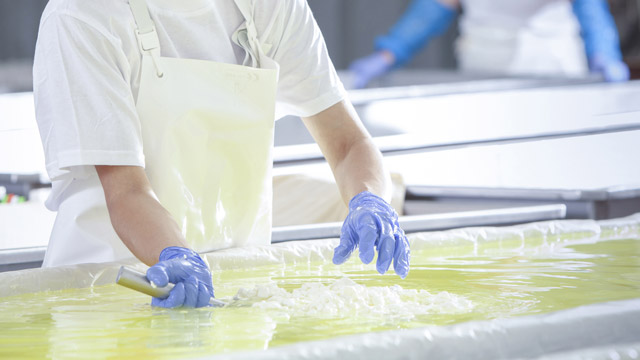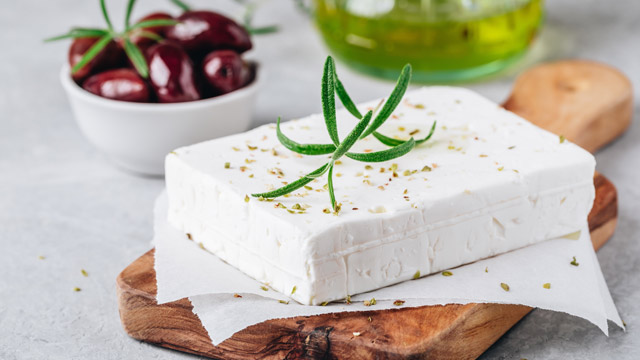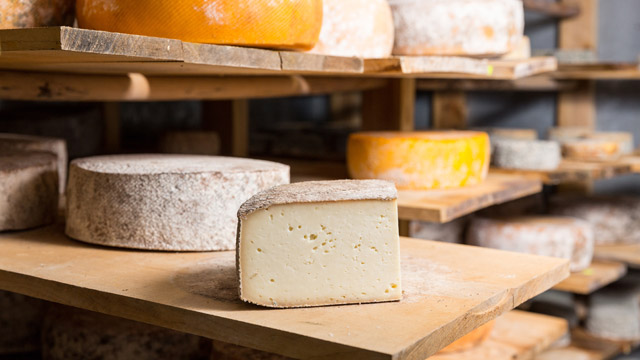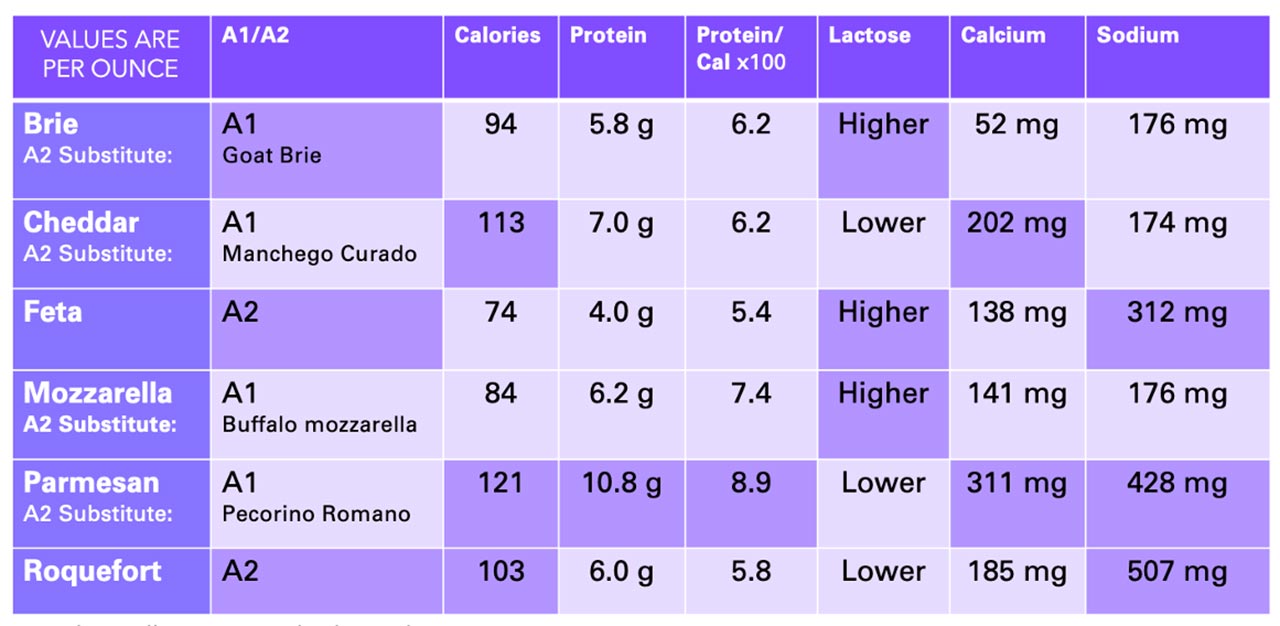Follow us 261.1k
Quick Summary tl;dr
There are thousands of cheese varieties! Cheese is among the most versatile food groups on the planets, be you a non-vegan vegetarian or an animal-based carnivore.
Different people have dairy intolerances for different reasons. Casein and lactose are more common reasons. Histamine and tyramine can also be considered.
Dairy-intolerant people can experiment with eliminating or substituting cheeses from particular “intolerance” groups to figure out if they can enjoy dairy without symptoms.
There is a dangerous number of puns you can make about dairy!
“Life is great. Cheese makes it better.” Were truer words ever spoken? From cheese on a burger to cheese in an omelet, or from Brie and figs to saag paneer, cheese is a global favorite food and one of the most versatile and diverse foods on the planet. And to the curious mind, cheese can be as much as intellectual pleasure as a gastronomic one. So, Brie ready because you’re about to have a Gouda time learning some eDam cool stuff!
The topics we are going to run through today, in sequence, are as follows: (1) How cheese is made; (2) A1 versus A2 dairy (a.k.a. mutant cows and opioids)! (3) lactose; (4) calcium; (5) a helpful table; (6) histamine; (7) tyramine; and (8) saturated fat.
How is Cheese Made?
Stage 1: Milk Pasteurization
Cheese begins with milk. Usually, the milk is first heated to kill off potentially pathogenic bacteria. This is called pasteurization. “Raw” cheese, that has not been pasteurized, is also available for purchase, which some people prefer because it is presumed to confer additional probiotic benefits.
Free Download
Trialed & tested for best results
Optimized for nutrition
Never feel hungry
Track all macros including net carbs
Scan products
Create your own meals
Track ketones, blood glucose & lipids
Stay hydrated with water tracking
Track your mood & energy levels
Calculate your ideal fat, protein & carb intake
Set any goal: weight loss, maintenance or weight gain
Your macros update based on your progress
Monitor your macros, water intake, mood & energy
Body weight, body fat and body measurements
Ketones, blood glucose & lipids
Expert articles to help you make informed choices
Guides & free diet plans
New daily content
Complete Keto Diet guide
Integrated shopping basket
Restaurants & guide to eating out
Free Download
Stage 2: Bacterial Starter Cultures
Bacterial starter cultures are then added to (pasteurized or raw) milk and the process of fermentation begins. During fermentation, the bacteria metabolize lactose (the milk sugar) into lactic acid. Yes, that’s right. The same molecule that builds up in your muscles and blood during heavy exercise is also present in cheese and influences its flavor.
Did you ever wonder what makes Sharp Cheddar sharp? In the making of sharper Cheddars, bacteria are allowed more time to feed on the lactose and, in turn, more lactic acid is produced. By contrast, a cheese like Gouda has more lactose and less lactic acid, contributing to a sweeter flavor profile.
The type of bacteria that is added to the milk, and the type of milk itself, also both contribute to the flavor of the final cheese. This is because flavor is partially conferred by how bacteria break down the fats and proteins in milk. Different bacteria and milk combinations, thereby, generate different flavors!
For example, Goat Cheeses get their characteristic goaty flavor from caprylic acid, a fatty acid that’s produced when bacteria break down goat milk fats. You may have actually heard the term “caprylic acid” if you’ve ever shopped for medium chain triglyceride (MCT) oils because pure C8:0 MCT is literally just caprylic acid. And here’s a fun fact for you: “capra” means goat in Latin. So, when you buy MCT oil, you’re really buying goat oil!
Flavor is partially conferred by how bacteria break down the fats and proteins in milk. Different bacteria and milk combinations, thereby, generate different flavors!

Stage 3: The Addition of Rennet
The next step in the cheese making process is the addition of rennet. Rennet is a mix of enzymes historically taken from the fourth stomach of ruminant animals (like cows); however, today most rennet is produced by genetically modified bacteria. (Don’t worry. It’s totally safe.)
The rennet enzymes, including a protein called chymosin, act to cleave the “casein” protein in milk. Maybe you recall from middle school biology that similar charges repel? Well, before the rennet is added, negative charges on the end of kappa-casein chains push the casein protein molecules away from one another. Chymosin in rennet chops off these negative charges which allows the casein molecules, now called para-kappa-casein, to bundle together into a meshwork that traps minerals and fat molecules inside. Thus, the “curds” in cheese are bundles of casein proteins containing minerals and fat.
At this point, the dairy mixture looks like if you took cottage cheese and dumped it in water. There are a bunch of curds floating around in a pale white fluid. This fluid is called the “whey,” and, for the most part, it’s waste. Once the rennet has curdled the milk into curds, the whey can be siphoned off, leaving just the curds.
Stage 4: Making Different Types Of Cheese
Finally, cheese is through its childhood and ready to differentiate itself. What happens next varies based on what type of cheese one is making. Cheese can next be pressed and salted, as with cheddar. It can be hooped and brined, as with mozzarella. It can be aged, like parmesan. It can be injected with mold spores to create blue cheeses. The possibilities and combinations of treatments are endless, which is why there are at least 2,000 varieties of cheese in existence! Hopefully, that’s a number that will never stop growing!
There are at least 2,000 varieties of cheese in existence. Hopefully, that’s a number that will never stop growing!
A1 Versus A2 Dairy (Mutant Cows and Opioids)
Now that you know casein is the main family of cheese proteins, I want to tell you something shocking. The casein in the Cheddar cheese (like that you might buy at your local store) has opioid properties. It could even be making you or a family member sick. But don’t worry, we have a solution, one that begins with evolution.
After humans domesticated cattle, many breeds developed a mutation in their DNA causing them to produce a mutant form of casein known as “A1” casein. (For the biochemistry nerds out there, the specific mutation was a proline 67 to histidine SNP). This mutation allows for enzymes in our guts to chop up the A1 casein molecule into fragments. One of these fragments is called beta-casomorphin-7 (BCM7), which, as its name suggests, is an opioid. BCM7 can have consequences on health for vulnerable people.
A1 Dairy: Inflammation, IBS & GI Distress
BCM7 can bind to u-opioid receptor and increase inflammation, aggravate irritable bowel syndrome or inflammatory bowel diseases, and it can contribute to bloating and constipation. ( Pal S. et al. 2015) A double-blinded, randomized, crossover study in which 36 people received A1 and A2 dairy on different occasions found that “While receiving A1 milk, higher gut inflammation correlated with higher abdominal pain and higher bloating scores. These relationships were absent in the same people when they received A2 milk.” ( Ho S. et al. 2014)
Personally, I can attest to just how big an issue A1 dairy can Brie. That’s why I’m passionate about Pecorino (sheep) as a substitute for Parmesan (cow).
A1 Dairy & Autoimmune Diseases
BCM7 is also an immunomodulator. Studies have found that A1 dairy consumption is associated with increased incidences of autoimmune diseases, like type 1 diabetes, a condition in which the body destroys the insulin producing cells of the pancreas. ( Elliot RB. et al 1999) Furthermore, a review on the topic published in prestigious journal, Nature, states that there is “evidence that A1 beta-casein cows' milk protein — and its BCM7 derivative — are potential causal triggers of type 1 diabetes in individuals with genetic risk factors.” ( Chia JS. et al. 2017) Who knew, Muenster (a cheese from cows) was such a monster?
A1 Dairy & Mental Health
As BCM7 is an opioid and can cross the blood-brain barrier, it’s also not entirely surprising that BCM7 concentrations (or antibodies to cow casein) in the blood tend to be higher in certain individuals with behavioral abnormalities and mental illnesses, such as autism and schizophrenia. ( Jarmolowska. et al. 2019; Kamikski S. et al. 2007; Niebuhr DW. et al. 2011)
Certainly, Correlations do not prove Causation, but is the Cheddar worth it?

What is A2 Dairy and Why is it Better?
The good news is that the A1 mutation only arose in domesticated cattle. That means non-cow dairy products are safer for your gut, immune system, and brain. In fact, it’s the A1 casein, not the lactose, that is probably the root of most dairy intolerances. Some great popular “safe” cheeses you may already like or want to try are Feta (sheep), Manchego (sheep), Pecorino Romano (sheep), Roquefort (sheep), Halloumi (sheep or goat), Goat Brie, Goat Gouda, or Buffalo Mozzarella.
Dairy & Lactose Intolerance
Lactose is the sugar in dairy. Like all sugars, it is water soluble.
Drying is a process of removing water from cheese so its consistency is harder. This means that the harder the cheese, the lower the lactose content.
Cheeses like Brie, Camembert, Cottage cheese, and Ricotta are softer and have higher levels of lactose. Cheeses like Cheddar, Manchego, Parmesan, and Swiss are harder and have lower levels of lactose.
Drying is not the only method of reducing the lactose content of cheese. Aging and fermenting lower the lactose content of cheese. Aging simply allows for more drying. Fermenting, as we shared above, gives bacteria the opportunity to break lactose down into lactic acid.
In addition to fermenting lactose outside the body, probiotic bacteria in some dairy products can also help with lactose intolerance. This may be because these bacteria express the enzyme beta-galactosidase, which breaks down lactose.
The theory goes as follows: when you eat probiotic cheese, yogurt, or kefir, the bacteria survive your stomach acid and pass into your small intestine where they mix with bile acids. These bile acids help release the beta-galactosidase enzyme into the soupy mix of food (that’s now flowing through your gastrointestinal system) where it breaks down the lactose sugar. Ta da! Backing this model, people who consume the same amount of lactose in the form of either milk, yogurt, or kefir, produce less hydrogen gas, fart less, and have less severe gastrointestinal symptoms when they consume the latter two products (yogurt and kefir) containing live beta-galactosidase expressing bacteria. ( Hertzler SR. et al. 2003)
But if you have true lactose intolerance and really like your Brie, you can always try a lactase enzyme supplement as well — to be taken with the first creamy bite.
Cheeses like Brie, Camembert, Cottage cheese, and Ricotta are softer and have higher levels of lactose. Cheeses like Cheddar, Manchego, Parmesan, and Swiss are harder and have lower levels of lactose.

Dairy & Calcium
Dairy has calcium for supporting strong bones. This is common knowledge of which you are probably aware. What you might not know is that not all cheeses are created equal in the calcium department. For example, Feta has about half as much calcium as Gouda. Why is that? Acid dissolves calcium. Therefore, more acidic cheeses have less calcium. In fact, the graph of cheese pH (lower pH is more acidic) and cheese calcium content is fairly linear.
There are some exceptions to this trend. Parmesan is exceptionally high in calcium because the rennet is added to the milk early, binding up the calcium in the casein curds before much acid is produced to dissolve the calcium. Blue and molded cheeses are lower in calcium despite being relatively non-acidic because during their production they actually were quite acidic, but the metabolism of the molds increased the pH between then and when you take that first lovely bite of Roquefort.
Parmesan is exceptionally high in calcium because the rennet is added to the milk early, binding up the calcium in the casein curds before much acid is produced to dissolve the calcium.
A1 & A2 Dairy: Nutrition Facts and Lactose Content
Of course, cheeses vary by more than their lactose and calcium contents. Other nutrients some people like to take notice of are calories, protein, and sodium. Therefore, in case it’s helpful for you, I’ve created a little table comparing some common types of cheeses based on these parameters. Darker cells represent higher values.

Darker cells represent higher values.
Values are generic and vary by specific variety and source.
Dried or aged cheese = less lactose.
More acidic type of cheese or blue cheese = less calcium.
Dairy & Histamine Intolerance
While A1 casein and lactose are more common causes of dairy intolerance, histamine can be an issue for some people. Histamine is a molecule released by immune cells (called mast cells) during an immune reaction. Maybe you’ve heard of antihistamine drugs to treat allergies, like Zyrtec, Allegra, or Claritin. These medications work by blocking the effects of the histamine molecule.
But, just like your immune system, certain bacteria in food can make histamine from the amino acid histidine. 50 mg per meal is the upper tolerable limit of histamine ( European Food Safety Authority. 2011).
However, if someone has a genetic histamine intolerance, they may want to avoid histamine-rich foods altogether. Fermented foods, like wine, sauerkraut, and certain cheeses are rich in histamine. If you do have a histamine sensitivity, it may be best to avoid aged cheeses like Sharp Cheddar, Gorgonzola, Parmesan, or Roquefort and other Blue cheeses. Instead opt for softer, younger cheeses like Havarti, Mascarpone, Mozzarella, Soft Goat Cheese, or Ricotta. Feta, Paneer and Halloumi are also pretty histamine safe options.
As it happens, Roquefort is my favorite cheese and I myself am histamine intolerant. This is because I’m one of the small percentage of people who has a mutation in the AOC1 gene coding the enzymes that breaks down histamine, diamine oxidase (DAO).
But not only mutants, like me, should think about histamine and DAO. Over 50% of the cheese loving world might consider contemplating DAO. DAO levels are influenced by hormones and the menstrual cycle. They are higher during the luteal phase and lower during the follicular phase. This suggests that histamine intolerance may be worse between the two weeks spanning from the start of menses to ovulation. ( Hamada Y. et al. 2013)
How To Alleviate the Symptoms of Histamine Intolerance
But there are solutions. The first is simple. Take a DAO supplement. You can buy DAO in a capsule and take it when you eat histamine rich foods.
A study in 28 patients with histamine intolerance found that supplementation with 0.3 grams of DAO capsules before meals improved all the symptoms of histamine intolerance. ( Schnedl WJ. et al. 2019).
The second option is more natural, but it may be off-putting for some because it involves eating organ meat. Kidney is a naturally good source of DAO. (In fact, the DAO in the capsules given to participants in the above study was taken from pig kidneys.)
So, if you suffer from histamine intolerance, try taking a DAO supplement or include organ meats in your diet.
Personally, I love a good kidney steak with a Roquefort butter-cream sauce. And guess what? Despite my genetics I can enjoy it without any troubles.
Dairy & Tyramine Intolerance
Tyramine is another rarer cause of dairy intolerance (as compared to A1 casein and lactose) that nonetheless gives some people trouble.
Tyramine is derived from the precursor amino acid, tyrosine, a property it shares with dopamine, norepinephrine, and epinephrine. That means it can interfere with the functions of these molecules and cause an overflow of neurotransmitters in the brain or of hormones from the adrenal glands.
In the most severe cases, this can even lead to a hypertensive crisis, a massive spike in blood pressure that itself can cause a stroke. This may not be, and probably is not, relevant to you. But, if you want a medical fun fact, this is why patients with depression or Parkinson’s disease, who are treated with monoamine oxidase inhibitor (MAOi) drugs, can’t have certain cheeses! (The list of cheeses that are high and low in tyramine is similar to those for histamine, above.)
MAO is the enzyme that degrades dopamine and tyramine, so blocking its function allows for a buildup of tyramine and can lead to devastating consequences. Thankfully, MAOi drugs aren’t prescribed much anymore. Who wants to live in a world where Blue cheese is lethal?
Dairy & Saturated Fat
You’ve probably heard that saturated fat is bad for you. The story behind why that perception has persisted, despite evidence to the contrary, is a long one. (If you are interested, I’ve written another blog about it here: Aren’t Saturated Fats Bad For You?). Here, I’ll be concise and just share a quote directly from the Journal of the American College of Cardiology’s State-of-the-Art 2020 review on saturated fats ( Astrup A. et al. 2020):
“The recommendation to limit dietary saturated fatty acid intake has persisted despite mounting evidence to the contrary. Most recent meta-analyses of randomized trials and observational studies found no beneficial effects of reducing SFA intake on cardiovascular disease (CVD) and total mortality, and instead found protective effects against stroke… Whole-fat dairy, unprocessed meat, and dark chocolate are SFA-rich foods with a complex matrix that are not associated with increased risk of CVD. The totality of available evidence does not support further limiting the intake of such foods.”
Cheese and chocolate are back on the table my friends!
But if you don’t believe me or this quote, believe the French. The French consume 58 pounds of cheese per person per year, have diets in which up to 40% of calories are derived straight from saturated fat, and they have one of the lowest rates of heart disease in the world! ( Petyaev IM and Bashmakov YK. 2012) So, all I have to say now is, “Bon Appetit!”
The French consume 58 pounds of cheese per person per year, have diets in which up to 40% of calories are derived straight from saturated fat, and they have one of the lowest rates of heart disease in the world!
Cheese Dictionary
I know there was a lot of terminology above. Sorry. Cheese science is complicated! Below is a list of terms in case it is helpful.
|
CHEESE DICTIONARY |
| A1 casein |
Form of casein protein from domesticated cattle; potentially inflammatory. |
| A2 casein |
Form of casein from sheep, goat, and buffalo; the “safer” casein. |
| BCM7 |
Opioid formed from A1 casein. |
| Brined dairy |
Matured in salt water; mozzarella. |
| Coagulation |
Process in which casein bundles into curds after rennet is added to milk. |
| Curd |
Bundle of casein protein. |
| DAO |
Enzymes that degrade histamine and can alleviate the symptoms of histamine intolerance. |
| Fermentation |
Process in which bacteria convert lactose to lactic acid. |
| Histamine |
Immune modulator released by mast cells; also in aged and molded cheeses. |
| Lactose |
Cheese sugar; lower levels in harder cheeses. |
| Pasteurized dairy |
Heating dairy to kill bacteria. |
| Raw dairy |
Dairy that hasn’t been pasteurized, mostly safe. |
| Rennet |
Enzymes added to milk to cause coagulation so the casein curds can be separated from the liquid whey. |
| Tyramine |
Molecule in certain cheeses that can cause problems in some people by increasing catecholamine levels. |
| Washed-rind |
Rinded cheeses washed in brine or alcohol during the adding process. |
| Whey |
Liquid “waste” removed after rennet has been added and solid curds form. |
Do you like this post? Share it with your friends!
Let us know what you think, rate this post!
